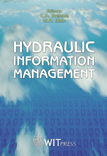Dam-break Wave Routing Using Virtual Extended Domain Approach
Price
Free (open access)
Transaction
Volume
52
Pages
11
Published
2002
Size
589 kb
Paper DOI
10.2495/HY020211
Copyright
WIT Press
Author(s)
F. C. B. Mascarenhas
Abstract
One of the major difficulties in the mathematical modelling of dam-break waves is related to the correct introduction of the boundary conditions, specially the downstream ones. In the shock capturing approach used in this work the governing equations are solved by finite differences, assuming that the flow is subcritical. This fact implies that two set of boundary conditions are needed, one at the upstream and the other at the downstream end. Usually the dam-break cases are hypothetical problems, and so the observed downstream values of the dependent flow variables are not available. In such situations where there is no control at the downstream end, the use of a rating curve at that location is a possible downstream boundary condition. However, this condition may disable the mathematical modelling, since the rating curve is valid only for steady flows. An artifice that can be used is the virtual extended domain, where the original length of the stretch is multiplied by two or more, assuming that the end of the virtual domain is located in an undisturbed flow zone, and the new downstream boundary conditions are simply related to a practically constant value of a flow dependent variable in time. The uncertainties introduced in the model results may become restricted simply to the virtual domain, while in the real length the results are approximately free of disturbances. This approach is used in this work, first for a natural flood wave for validation purposes and then for a hypothetical dam-break flow resulting from a Brazilian dam failure.
Keywords




